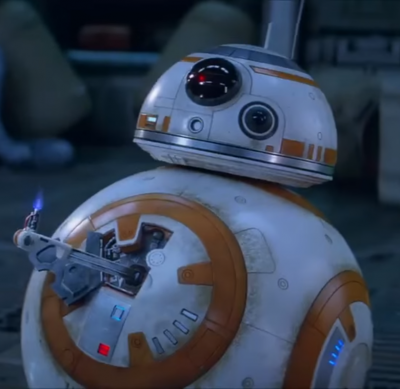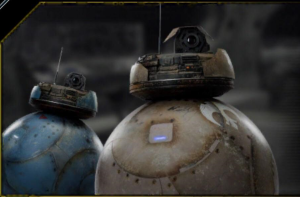BB-series Astromech Droid
Background
The BB-series astromech did what no other astromech could do in fifty years - it successfully matched and perhaps even exceeded the legendary R2-series in complexity and capability. A masterwork of droid engineering, the BB-series was an evolution of ball-shaped droids used near the end of the Galactic Civil War, such as prototype therapy droids designs to assist veterans in returning to civilian life. As a result, BB units possessed a dedicated, goal-focused personality, and were protected by self-preservation protocols. However, it was known for some experienced droids to create strong loyalty subprograms that saw them enter into dangerous situations in order to assist their masters and owners. The droids communicated via droidspeak instead of the Binary used by older designs.
Capabilities
Powered by a selenium drive, these droids had an internal orbiculate motor that allowed their spherical bodies to roll across a variety of terrain, keeping their domed heads fixed on top with magnetic casters. Rather than keeping the head tethered by a single contact point, wireless telemetry allowed the two sections of the droid to communicate.[5] The internal gyroscopic propulsion system was self-correcting, and surface sensors on the spherical body allowed the droid to travel across uneven environments such as deserts, with the benefit of its shell being sealed from dust contamination. For areas that proved too difficult for the orbiculate motor to traverse, BB units were equipped with compressed liquid cable launchers that could tether and reel the droid in to hard-to-reach spots.[5] As the droid's body faced in all directions at all times, it needed only to accelerate rather than turn.[10] The BB's dense shell featured six swappable circular tool-bay disks that could be fitted with numerous forms of equipment, such as a magnetic-tipped bolt-spinner.
The droid's domed head was composed of a lightweight cranial frame featuring a large, round primary photoreceptor and a smaller articulated holoprojector array. The droid's sensors featured advanced calibrated synthetic optics. Transmitter and receiver antennae extended from the top of the head, and data ports were located above a band of stainless inoxium girding the bottom of the dome. The head could be dislodged from the body given significant force, but could quickly reattach itself with the magnetic casters.

